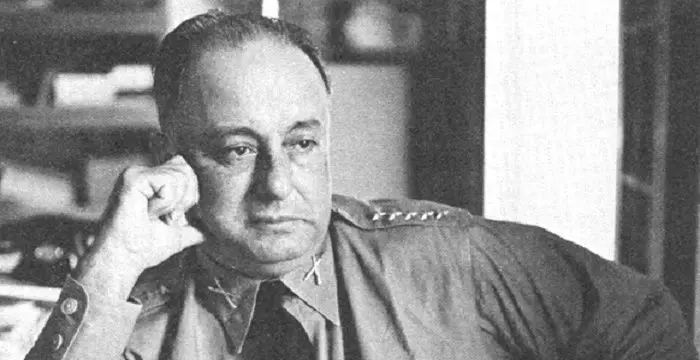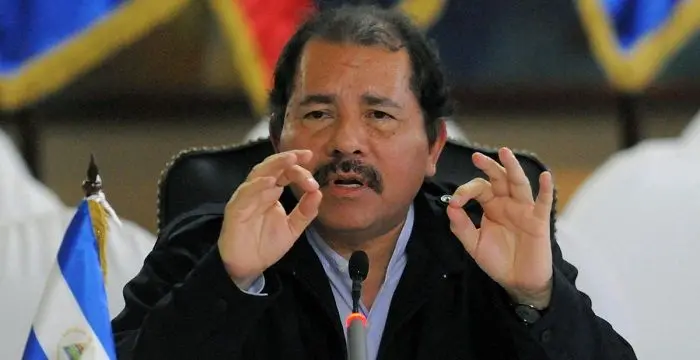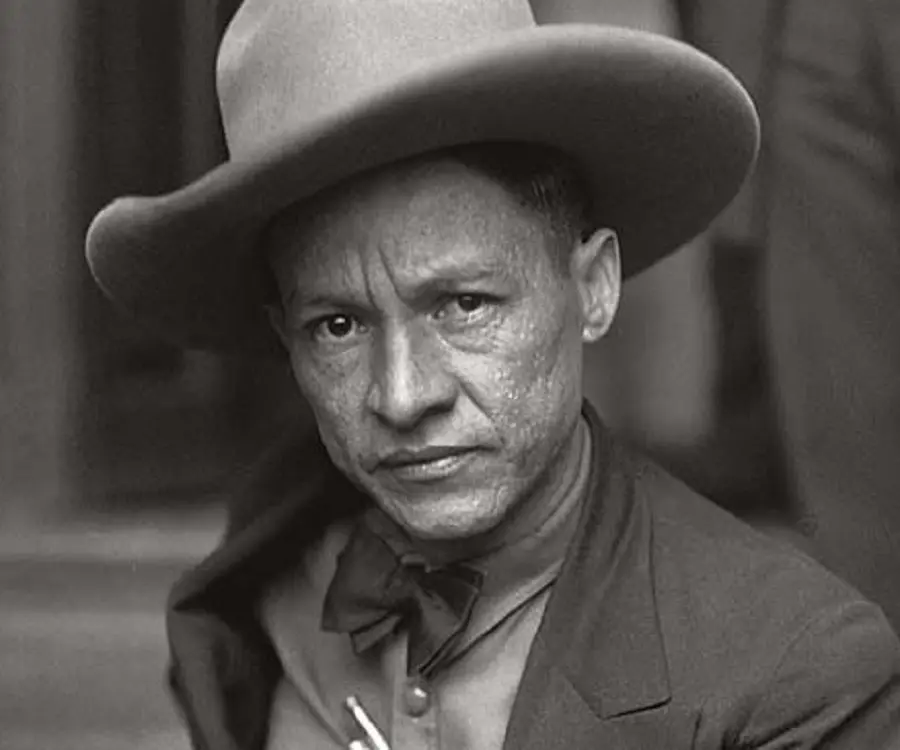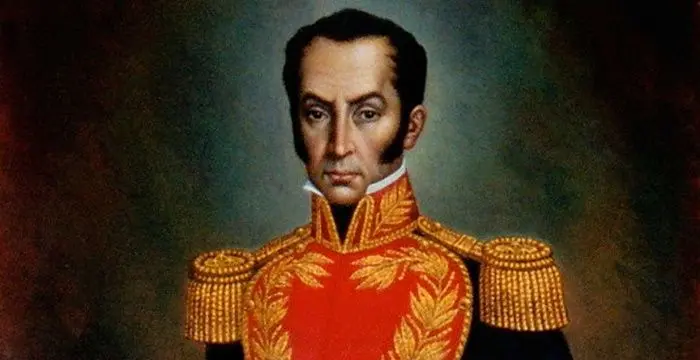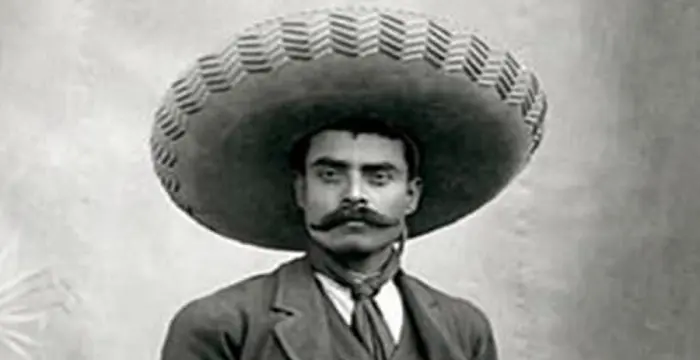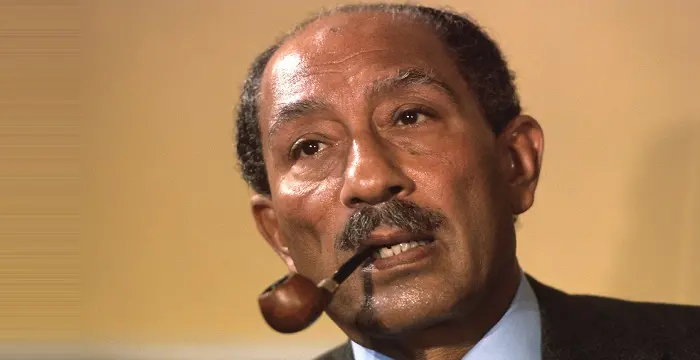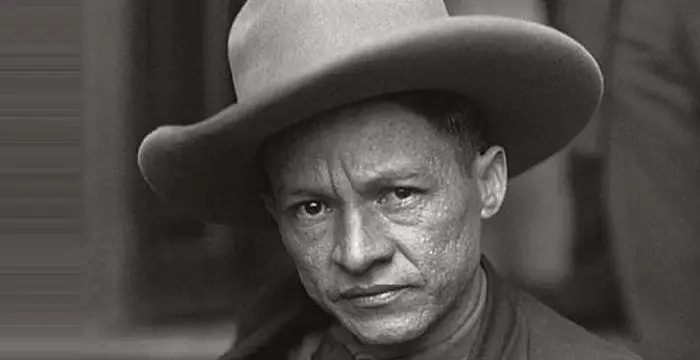
Augusto César Sandino - Nicaraguan Revolutionary Leader, Life Achievements and Life
Augusto César Sandino's Personal Details
Augusto César Sandino was a revolutionary guerrilla leader from Nicaragua
| Information | Detail |
|---|---|
| Birthday | May 18, 1895 |
| Died on | February 21, 1934 |
| Nationality | Nicaraguan |
| Famous | Leaders, Revolutionaries, Nicaraguan Men, Nicaraguan Revolutionary Leader |
| Known as | Augusto Cesar Sandino |
| Cause of death |
|
| Birth Place | Niquinohomo |
| Gender | Male |
| Sun Sign | Taurus |
| Born in | Niquinohomo |
| Famous as | Nicaraguan revolutionary Leader |
| Died at Age | 38 |
// Famous Nicaraguan Men
Anastasio Somoza García
Anastasio Somoza Garcia is the former Nicaraguan President who heralded the autocratic regime in the country which continued for the next 50 years. To know more about his childhood, career, profile and timeline read on.
Daniel Ortega
Daniel Ortega is the current President of Nicaragua and is known for his wide-range of social and economic reforms. To know more about the childhood, career, profile or timeline of this famous politician read on
Augusto César Sandino's photo
Who is Augusto César Sandino?
Augusto César Sandino, the famous Nicaraguan leader sought to free his country from foreign and wealthy dominion. He presumed the role of a revolutionary leader as a young man, and his leadership qualities gained him many supporters. He was a man of determination and achieved his goal of liberating his country from foreign control. He was an eloquent orator, who could convince people of his missions and motives, and easily attain their help in fulfilling his responsibilities. This revolutionary was very sensitive about his country, and even as a teenager he could gauge the amount of loss Nicaragua was suffering at the hands of foreign administrators. He had an aggressive nature, and during an incident when someone disdained his mother, he immediately revolted. This rebellious nature was also seen in his role as a guerrilla leader. The nationalist leader disapproved of the US Marines base in his country and fought tooth and nail to expel the foreigners from Nicaragua. He vehemently opposed the intervention of the United Nations in the administration of his country. Finally, his constant revolutionary efforts paid off when the US military bases left his country. This leader was made to pay for his endeavours with his life when he was assassinated by the ‘National Guard’ soldiers
Childhood & Early Life
This revolutionary was born on 18th May, 1895, in Nicaragua. He was originally named Augusto Nicolás Sandino.
His father was a rich Spanish landlord by the name Gregorío Sandino, and his mother Margarita Calderón served as a domestic helper at Gregorio’s house. Gregorío and Margarita shared an illicit relationship, and Augusto was their illegitimate child.
As an illegitimate child, he was not accepted by his father as a descendant, and spent his childhood with his mother.
After he turned nine, Augusto was welcomed to his father’s house, and later his schooling began.
His primary education began in a school in his village, and later he joined an institute located in Granada.
In 1912, the United States military tried to outrage those who rose in rebellion against Adolfo Díaz, the President of Nicaragua. Augusto Sandino happened to witness this political turmoil in his country.
At a young age, he tried to murder the son of a significant citizen because the boy had commented about his mother disapprovingly. Alleged on charges of murder and impending imprisonment, César had to escape and he found refuge in places like Guatemala, Honduras and Mexico.
Career
At Mexico, he got employed at the ‘Standard Oil’ refinery which was situated near Tampico port. By that time the ‘Mexican Revolution’ was approaching its end. Augusto noticed the patriotism of the Mexicans which helped him develop his own political and social philosophy.
In 1926, César went back to his country after the charges against him got subdued. Later, at a gold mine in San Albino which was close to the Honduras border, he started working as a clerk.
During the same time, the Liberal Soldiers of Puerto Cabezas (a Caribbean Port) raged a war against Adolfo Díaz, the President of Nicaragua, who was then re-elected to the position, under the supervision of the United States.
At the gold mine, where he worked, Augusto convinced people to fight for their rights and formed an army with gold miners as soldiers. With this army, he led an attack on the barrack of the Conservative soldiers near the gold mine of San Albino.
After leading the armed attack, he went to meet the revolutionary leader José María Moncada Tapia in order to join them in the revolt. However, Moncada did not have faith in Sandino as he was aware of the latter’s proclamation of himself as the president. Moncado also knew about the attack led by Sandino on the Conservative military base, which went in vain.
Even the exiled Vice President of the Liberal Juan Bautista Sacasa refused to provide weapons to Sadino. But later, other commanders of the Liberal group gave the revolutionary a commission.
In 1927, Augusto went back to the Segovia Mountains, arranged his army, which mostly comprised of farmers, and led an attack on the government troops which turned out to be a successful one.
The Liberal army was funded by Mexico, and were almost on the path of capturing the capital of Managua when the Liberal General Moncada was forced by the US to cease-fire.
The ‘Espino Negro’ Accord was signed between the US and the Liberals in 1927, according to which both the factions will surrender their weapons. Later, US Marines established their base in the country to oversee the approaching presidential elections. But César did not follow the terms of the accord and refused to disarm, and reverted to the Segovia Mountains.
In July the same year, this guerrilla leader waged a war against the US. Later, when the US Marines and the newly formed national army ‘Nicaraguan Guardia Nacional’ approached to arrest Sandino, the guerrilla troops attacked them. But the followers of Sandino were overpowered by the other armies, which resulted in the loss of many guerrilla soldiers.
Sandino named his guerrilla troop as ‘The Army in Defense of the National Sovereignty of Nicaragua’, and he himself took the title ‘Augusto César Sandino’. The US army made many futile attempts at capturing this guerrilla leader.
Later on, César’s troops ruined the two huge mines named ‘Bonanza’ and ‘La Luz’ owned by Americans, because Sandino targeted US Marines as well as North Americans residing in Nicaragua who carried an ‘attitude’ similar to that of Coolidge, the American President.
He chose Froylán Turcios, the journalist, diplomat and poet from Honduras as the Foreign Representative of his group, who also worked as his Liaison Officer.
Sandino had certain demands such as President Díaz be removed from his office, annulment of the ‘Bryan-Chamorro Treaty’ which allowed US to construct a canal through Nicaragua, elections in the country to be overseen by Latin-Americans, and removal of US forces from his country.
He further increased his demand by asking the ‘United Provinces of Central America’ to be restored.
In 1928, Sandino experienced a huge hindrance when José María Moncada became the President of Nicaragua. But he carried on his mission, undeterred.
He started getting support from the Soviet Union and the communist organization ‘Comintern’ (Communist International). The ‘Pan-American Anti-Imperialist League’ even published some statements in his support.
The relationship between this leader and his foreign representative Turcios started falling apart, and in 1929, the latter resigned from his post, which meant less weapons and decreased foreign supporters. Soon, the guerrilla army began to be defeated by the US Marines.
The revolutionary leader tried hard to arrange financial and military support from various sources, and after failing a number of times, he was finally helped by Tony Eduardo Delduca, the leader of the ‘Purple Gang’, who felt privileged to help Sandino.
For a short period of time, Augusto went into exile to Mexico, where he had joined the ‘Magnetic-Spiritualist School of the Universal Commune’ (EMECU), founded by Buenos Aires. However, after sensing danger in the country, he reverted to Nicaragua.
In 1931, an earthquake devastated Managua, and also enfeebled the government. This situation provided an opportunity to the revolutionary leader to seize many cities belonging to the nation.
The ‘Great Depression’ made the US withdraw its troops from Nicaragua, as it was unable to bear the expenses, and the control of Nicaragua was taken up by ‘National Guard’ group.
In 1933, the US Marines evacuated Nicaragua and Juan Bautista Sacasa was appointed the new president of the country.
Following this, Augusto promised not to attack any American of working-class who visited his country, and even saluted the Americans.
In 1934, this leader met the new president Sacasa, and assured that his troops will be ordered to surrender their weapons soon. He had still maintained his opposition towards the ‘National Guard’, and wanted this group to be dissolved.
The leader of the ‘National Guard’, Anastasio Somoza García, issued an order to assassinate Sandino without taking president Sacasa’s permission.
Major Works
In 1926, this young man emerged as a guerrilla leader, and organized an army which fought against the US military based in his country, Nicaragua. The following year, the revolutionary raged a war against the US, which he stated as their enemy. He even declined to accept the terms and conditions of the ‘Espino Negro’ Accord. At last, six years of continuous rebellion freed Nicaragua from the grip of the US army.
Personal Life & Legacy
In around 1927, Augusto married Blanca Arauz, who was from Jinotega village and by profession she was a telegraphist.
Sandino’s disapproval of rich and foreign dominance made him a ‘Robin Hood’ of sorts amongst Nicaraguan leftists, and also many Latin-American individuals.
The political party of Nicaragua, ‘Sandinista National Liberation Front’ adopted the silhouette and picture of this revolutionary leader as their symbol.
On 21st February 1934, this revolutionary guerrilla leader was assassinated by the ‘National Guard’ soldiers in the place called La Reynaga. However, the facts relating to the execution and burial of this leader are enigmatic.
The international airport at Managua was named after Sandino for the first time during the 1980s, when the ‘Sandinista National Liberation Front’ party ruled the country.
However, in 2001, the then president of Nicaragua Arnoldo Alemán changed its name to ‘Managua International Airport’.
Later, when Daniel Ortega was elected as the president of the country, he again named the airport after Sandino as ‘Augusto C. Sandino International Airport’ and it is still known by the same name.
Trivia
This famous revolutionary leader had a tendency to exaggerate facts in order to establish his victory in a grand way
// Famous Revolutionaries
Tecumseh
Tecumseh was a Native American leader of the Shawnee clan. This biography profiles his childhood, life and timeline.
Simon Bolivar
Simón Bolívar was a Venezuelan military leader who was instrumental in independence of several Latin American countries from the Spanish rule. This biography profiles his childhood, life, achievements and timeline.
Emiliano Zapata
Emiliano Zapata was a Mexican revolutionary leader and one of the most important figures of the Mexican Revolution.Check out this biography to know about his childhood, family life, achievements and other facts about his life.
Augusto César Sandino biography timelines
- // 18th May 1895This revolutionary was born on 18th May, 1895, in Nicaragua. He was originally named Augusto Nicolás Sandino.
- // 1912In 1912, the United States military tried to outrage those who rose in rebellion against Adolfo Díaz, the President of Nicaragua. Augusto Sandino happened to witness this political turmoil in his country.
- // 1926In 1926, César went back to his country after the charges against him got subdued. Later, at a gold mine in San Albino which was close to the Honduras border, he started working as a clerk.
- // 1926In 1926, this young man emerged as a guerrilla leader, and organized an army which fought against the US military based in his country, Nicaragua. The following year, the revolutionary raged a war against the US, which he stated as their enemy. He even declined to accept the terms and conditions of the ‘Espino Negro’ Accord. At last, six years of continuous rebellion freed Nicaragua from the grip of the US army.
- // 1927In 1927, Augusto went back to the Segovia Mountains, arranged his army, which mostly comprised of farmers, and led an attack on the government troops which turned out to be a successful one.
- // 1927The ‘Espino Negro’ Accord was signed between the US and the Liberals in 1927, according to which both the factions will surrender their weapons. Later, US Marines established their base in the country to oversee the approaching presidential elections. But César did not follow the terms of the accord and refused to disarm, and reverted to the Segovia Mountains.
- // 1927In around 1927, Augusto married Blanca Arauz, who was from Jinotega village and by profession she was a telegraphist.
- // 1928In 1928, Sandino experienced a huge hindrance when José María Moncada became the President of Nicaragua. But he carried on his mission, undeterred.
- // 1929The relationship between this leader and his foreign representative Turcios started falling apart, and in 1929, the latter resigned from his post, which meant less weapons and decreased foreign supporters. Soon, the guerrilla army began to be defeated by the US Marines.
- // 1931In 1931, an earthquake devastated Managua, and also enfeebled the government. This situation provided an opportunity to the revolutionary leader to seize many cities belonging to the nation.
- // 1933In 1933, the US Marines evacuated Nicaragua and Juan Bautista Sacasa was appointed the new president of the country.
- // 1934In 1934, this leader met the new president Sacasa, and assured that his troops will be ordered to surrender their weapons soon. He had still maintained his opposition towards the ‘National Guard’, and wanted this group to be dissolved.
- // 21st Feb 1934On 21st February 1934, this revolutionary guerrilla leader was assassinated by the ‘National Guard’ soldiers in the place called La Reynaga. However, the facts relating to the execution and burial of this leader are enigmatic.
- // 2001However, in 2001, the then president of Nicaragua Arnoldo Alemán changed its name to ‘Managua International Airport’.
// Famous Leaders
Edi Rama
Edi Rama is the current Prime Minister of Albania. Check out this biography to know about his childhood, life, achievements, works & timeline.
Tecumseh
Tecumseh was a Native American leader of the Shawnee clan. This biography profiles his childhood, life and timeline.
Khalifa bin Zayed Al Nahyan
Sheikh Khalifa bin Zayed Al Nahyan is the current President of the United Arab Emirates (UAE). Check out this biography to know about his birthday, childhood, family life, achievements and fun facts about him.
Anwar Sadat
Anwar Sadat was the third President of Egypt and has been awarded the Nobel Prize for his peace initiatives. To know more about his childhood, career, profile and timeline read on the following biography.
Leo Varadkar
Cam Leo Varadkar is the current Taoiseach—the Prime Minister—of the Republic of Ireland. Check out this biography to know about his childhood, family life, achievements and other facts about his life.
Swami Vivekananda
Swami Vivekananda was the chief disciple of Sri Ramakrishna, and was responsible for awakening India spiritually. Check this biography to know in detail about his life, profile and timeline.
Augusto César Sandino's FAQ
What is Augusto César Sandino birthday?
Augusto César Sandino was born at 1895-05-18
When was Augusto César Sandino died?
Augusto César Sandino was died at 1934-02-21
Where was Augusto César Sandino died?
Augusto César Sandino was died in Managua
Which age was Augusto César Sandino died?
Augusto César Sandino was died at age 38
Where is Augusto César Sandino's birth place?
Augusto César Sandino was born in Niquinohomo
What is Augusto César Sandino nationalities?
Augusto César Sandino's nationalities is Nicaraguan
What is Augusto César Sandino's cause of dead?
Augusto César Sandino dead because of Assassination
What is Augusto César Sandino's sun sign?
Augusto César Sandino is Taurus
How famous is Augusto César Sandino?
Augusto César Sandino is famouse as Nicaraguan revolutionary Leader
